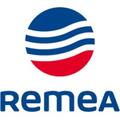Remea 's experience over the years shows that in very many cases this factor is overlooked, and ground investigation ends with poor quality geotechnical studies defining only the physical properties of the soil.
Why is a comprehensive study of the site, including from a chemical perspective, important?
A properly researched subsoil has a real impact on reducing the risk of unforeseen costs and schedule slippage. It can also be of great importance in estimating costs even before the purchase of a land property and can have a decisive impact on the decision to purchase a particular investment plot.
Well-conducted high-quality studies can protect against buying a "cat in the bag" and allow for more accurate design of the structure to be erected and optimal use of the land for future Investment.
In addition, land that requires additional geotechnical treatment before construction, as well as post-industrial wastelands (brownfield sites) that are highly likely to hide dangerous contaminants need not be unattractive to a future Investor. What's more, in many cases such sites offer an excellent location and an attractive price (also after calculating the required cleanup work).
Better data - better decisions!
For years, we have been using complex FEA computational programs to optimize structural designs. In recent years, a holistic design approach using BIM, as well as AI, has also been thriving. These tools are extremely useful as long as the right data is entered into them. The more good quality data we input, the better results we are able to get, leading to more accurate decisions.
Artificial intelligence is capable of generating hundreds of land use possibilities with a single click. However, in order for the results obtained to be faithfully reflected in reality, it is necessary to ask for the right boundary conditions, including good quality soil surveys performed in an economically and design-justified grid.
Adequately detected and contaminants shored up in advance allow us to take into account the method of their treatment at an early design stage. As a result, we are able to comprehensively assess the effective use of space and the costs associated with implementing a particular concept. There is a range of remediation methods for removing or reducing to acceptable levels concentrations of contaminants. In the vast majority of cases, on-site cleanup methods are less expensive than disposing of contaminated soil. However, they are often burdened with a longer implementation time, which may not be a problem with timely action. Additional correlation of potential remediation methods with the necessary earthworks and building construction, results in the analysis of the posed problem on all levels that can affect the budget of the Investment. That is why it is so important to have a set of good quality data before starting the design.
Example:
Investor X wants to develop a development project on a potentially unattractive plot of land in the city center. The landed property, due to historical records, may be contaminated. An informed investor, before signing the final contract, in addition to exhaustive analyses of, among other things, formal, MPZP, performs preliminary geotechnical and environmental studies, which show whether additional expenditures will be required for ground reinforcement, excavation shoring, groundwater impact or ground cleaning. With knowledge of the contaminants present in the ground, it is possible to calculate the profitability of the investment and ultimately decide to finalize the contract.
Assuming a positive result of the analysis carried out for the purchase of the property, in the next step the Investor conducts a good quality detailed study in accordance with the Regulation of the Minister of the Environment of September 1, 2016 on how to conduct an assessment of contamination of the earth's surface.
Having a set of data and the support of a professional land clearing entity, the Investor executes the Draft Remediation Plan in accordance with the Environmental Law and agrees it with the Regional Directorate for Environmental Protection.
With such a procedure scheme, the Investor is able to minimize investment risks that may be hidden in the ground, and take full advantage of innovative tools such as BIM or AI without worrying about the quality of the results obtained depending on the ground.









